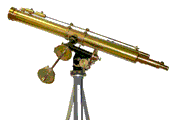Department of Physics and Astronomy: Publications and Other Research
Date of this Version
1980
Abstract
An electrostatic analyzer positioned at various angles has been used to measure absolute values of cross sections for electron production in collisions of neutral hydrogen atoms with helium as a function of the angle and energy of the ejected electrons. These cross sections are compared with corresponding ones for proton and electron impact to infer the mechanisms of electron production. A prominent peak in the energy distribution due to electron loss from the projectile occurs at an electron velocity equal to that of the projectile. At very low electron energies the similarity of the energy distribution to that due to electron impact suggests that the large cross section there is due to ionization of the target by the electron carried by the projectile. As with proton impact, the cross sections at low projectile velocities fall off approximately exponentially with the energy of the ejected electron, in agreement with the predictions of the electron promotion model.


Comments
Published in Phys. Rev. A 21, 506 - 514 (1980).
©1980 The American Physical Society
URL: http://link.aps.org/doi/10.1103/PhysRevA.21.506
DOI: 10.1103/PhysRevA.21.506